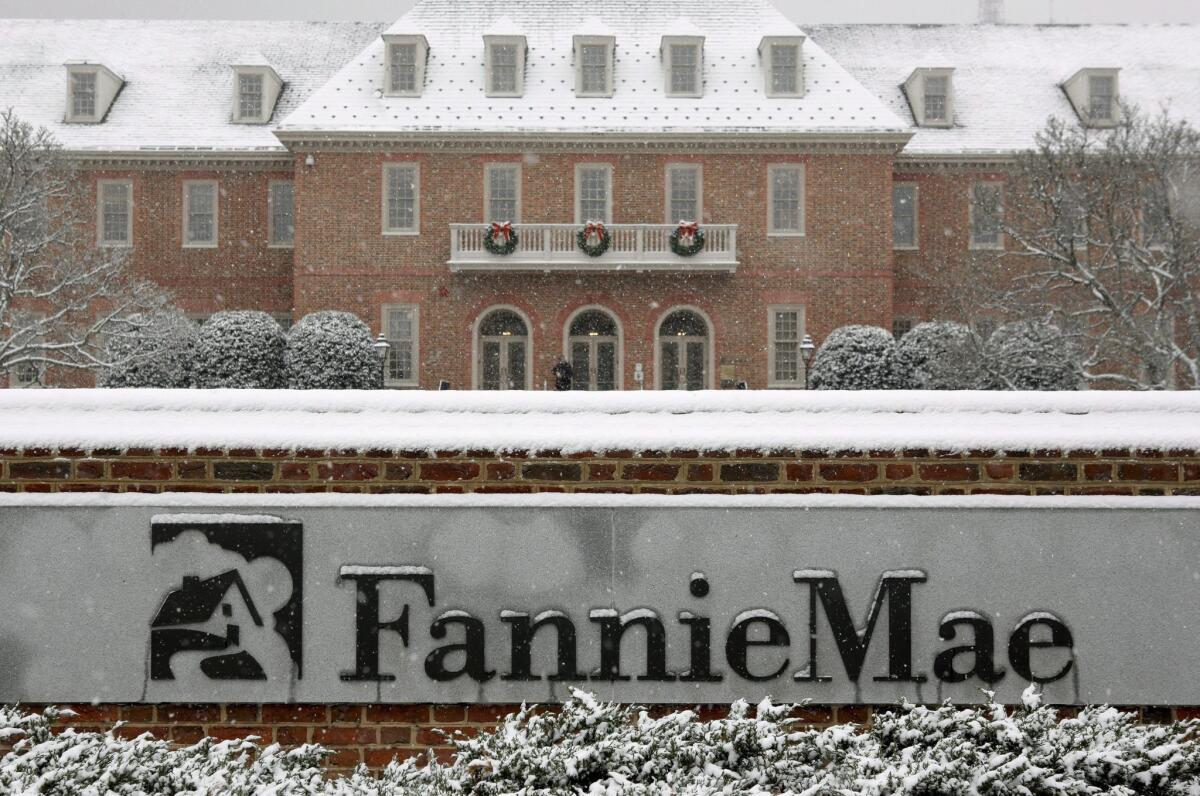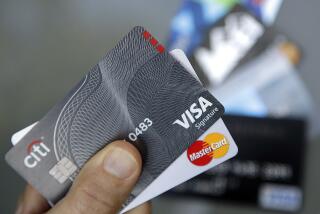Fannie Mae to pay U.S. $7.2 billion; bailout offset in full

WASHINGTON -- Fannie Mae posted its eighth straight profitable quarter in the final three months of last year and will send the federal government $7.2 billion, pushing its total dividend payments above the cost of the 2008 bailout for the first time, the company said Friday.
Boosted by the housing market rebound, the mortgage giant posted $6.5 billion in profit in the fourth quarter of 2013 and a record $84 billion for the year.
The dividend payment, based on those profits, will bring the total amount Fannie Mae has paid to the Treasury Department to $121.1 billion. That will more than fully offset the $116.1 billion in goverment aid it received since 2008.
QUIZ: How much do you know about mortgages?
“I’m very proud of what our employees have achieved and I’m very happy for the taxpayers,” Fannie Mae Chief Executive Timothy J. Mayopoulos said.
Fannie Mae and its sibling firm, Freddie Mac, were caught in the middle of the subprime housing market collapse and on the brink of failure when the goverment seized them in 2008. The Treasury pumped a total of $187.5 billion into the two companies to keep them afloat so they could support the struggling housing market after the financial crisis.
Fannie Mae’s $7.2-billion payment, to be made in March, also for the first time brings the total dividends paid to the Treasury by the two companies above the $187.5 billion paid out.
With Fannie Mae’s next payment, the two companies will have sent $192.4 billion to the Treasury.
That figure does not include an anticipated dividend payment in the coming weeks by Freddie Mac, which is expected to announce its own fourth-quarter profit soon.
It would be the ninth straight profitable quarter for Freddie Mac, whose last dividend check nudged its total payments above the $71.3-billion bailout it received.
Under terms of the bailout, the dividend payments don’t reduce the amount the companies owe to the taxpayers. But the payments offset the government’s bottom-line costs.
Fannie Mae’s annual profit easily exceeded its previous record of $17.2 billion, set in 2012.
The company was helped last year by billions of dollars from settlements with banks over bad loans Fannie Mae guaranteed during the housing boom, as well as a recalculation of the tax write-down the firm could take on its assets.
Mayopoulos said Fannie Mae expected to remain profitable “for the foreseeable future” but that earnings were likely to be “substantially lower” this year as the housing market rebound slows.
The company’s results come as Congress and the White House work to overhaul the housing finance system. There is a consensus that Fannie and Freddie should be shut down, though no agreement yet on how to replace them as the House and Senate work on bills that take different approaches.
The billions in dividend payments coming to the Treasury each quarter help to reduce the budget deficit and complicate efforts to shut down the companies.
But Mayopoulos noted that the dividend payments mean Fannie Mae’s profits are not being used to recapitalize the company, and taxpayers are on the hook for any future losses.
“Obviously, it’s good news for taxpayers that Fannie Mae is profitable and sending dividends to the Treasury,” Mayopoulos said on a conference call. “But I don’t think our profits should be interpreted as a reason for delaying housing finance reform.”
More to Read
Inside the business of entertainment
The Wide Shot brings you news, analysis and insights on everything from streaming wars to production — and what it all means for the future.
You may occasionally receive promotional content from the Los Angeles Times.











